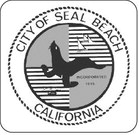Friday’s 4.3 temblor is a reminder of importance of being prepared


EARTHQUAKE ALERT
A magnitude 4.3 earthquake centered near Carson shook much of Los Angeles County and could be felt across the Southern California region, including Leisure World, on Sept. 17 at 7:58 p.m.
Residents in coastal communities like Long Beach, along with people living in South Los Angeles, felt the heaviest undulation of the quake, according to a United States Geological Survey map.
The earthquake, which struck at a depth of about 9 miles, also was felt as far north as Oxnard and south into Carlsbad, the USGS said.
No one was reported injured in this quake, but it is a reminder that they strike without warning and can be disastrous.
Being prepared for such an emergency can reduce fear, anxiety and, potentially, the losses that often accompany them.
The first step in preparedness is to have an emergency plan and supplies. LW residents will be responsible for their own safety and well-being before, during and after any disaster or emergency.
LW has several groups dedicated to emergency preparedness, including: Emergency Information Council The Emergency Information Council meets monthly to educate and inform residents about planning and preparing for any emergency, large or small. Meetings are open to all shareholders. Meetings are publicized in the LW Weekly.
Community Emergency Response Team (CERT) The Community Emergency Response Team (CERT) program educates people about disaster preparedness for hazards that may impact their area and trains them in basic disaster response skills, such as fire safety, light search and rescue, team organization and disaster medical operations.
Using the training learned in the classroom and during exercises, CERT members can assist others in their neighborhoods or workplaces following an event when professional responders are not immediately available.
CERT members also are encouraged to support emergency response agencies by taking a more active role in emergency preparedness projects. Classes are held in six-week sessions and publicized in the LW Weekly.
Organizing a Disaster Supply Grab-and-Go Kit It may be easier and cheaper than you think to organize household disaster supplies in convenient locations. According to ready.gov, a basic emergency supply kit should include the following items:
• Water (one gallon per person per day for several days, for drinking and sanitation)
• Food (at least a three-day supply of non-perishable food)
• Battery-powered or hand crank radio and a NOAA Weather Radio with tone alert
• Flashlight, extra batteries
• First aid kit
• Whistle (to signal for help)
• Dust mask (to help filter contaminated air)
• Plastic sheeting and duct tape (to shelter in place)
• Moist towelettes, garbage bags and plastic ties
• Wrench or pliers (to turn off utilities)
• Manual can opener (for food)
• Local maps
• Cell phone with chargers


